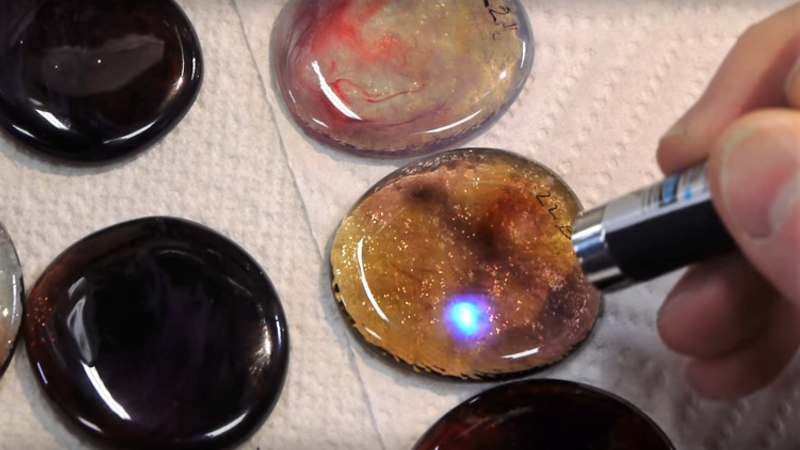[Ben Krasnow] is no stranger to exploring the more arcane corners of hackerdom, and the latest video on his “Applied Science” channel goes into a field few DIYers have touched: homemade glass, including the photochromic variety.
That DIY glassmaking remains a largely untapped vein is not surprising given what [Ben] learned over the last months of experimenting. With searing temperatures bordering on the unobtainable, volatile ingredients that evaporate before they can be incorporated, and a final product so reactive that a platinum crucible is the best vessel for the job, glassmaking is not easy, to say the least. Glassmaking doesn’t scale down from an industrial process very well, it seems. Nonetheless, [Ben] came up with a process that could be replicated using common enough ingredients and a simple electric kiln modded with a PID controller for pinpoint temperature setting. And while Luxottica has nothing to worry about yet, he did manage to get some clearly if subtly photochromic samples, despite the challenges.
Without a doubt, [Ben] crossed over into “mad scientist” territory a while back, and we think it’s great. What other way is there to describe a guy who has an electron microscope, a high-power ruby laser, a CT scanner, and a cookie making robot in his basement? Whatever you call it, we like the results.
















“That DIY glassmaking remains a largely untapped vein is not surprising given what [Ben] learned over the last months of experimenting. With searing temperatures bordering on the unobtainable, volatile ingredients that evaporate before they can be incorporated, and a final product so reactive that a platinum crucible is the best vessel for the job, glassmaking is not easy, to say the least.”
If we ever had an apocalypse, that would be one of the things further down on the list of recovered skills.
it’s a old skill. The Romans made it, Archeologists found glass slab in Israel from a ancient glass making site which they found a large glass slab 11×6.5×1.5 feet, weighing 9 tons. Imagine the heat it took to make that.
The ancients weren’t no slouches when it came to engineering feats.
The old glass formula was simple Natron and silica
Interesting video, but if he had seen this book he probably would have understood how they cook the glass mix in pots first, then remelt it for forming. It is a multi-step process.
Anyway there is a lot of good information here:
The manufacture of optical glass and of optical systems; a war-time problem
by United States. Army. Ordnance Dept; Wright, F. E. (Frederic Eugene), 1877-1953
Publication date 1921
https://archive.org/details/manufactureofopt00unitrich
very interesting stuff…
cool project!
check out the Rakow Research Library at the Corning Museum of Glass (https://www.cmog.org/research/library). It is one of the places for research in glass making
Also http://talk.craftweb.com/index.php is a very good place to find formulas
Craftweb is a community of studio glassblowers many of whom make their own Batch glass.
They are give helpful advice in both making batch and the building of equipment to make glass.
Many make their own colored glass.
Regarding the Corning museum of glass library, note that the Corning glassworks (Corning, NY) has a museum and a very interesting public tour.
Well worth a weekend trip (drive out Friday night, motel overnight, see the glassworks on Saturday, drive home), lots of technical information and interesting things to see there.
Seconded the Corning glass museum!